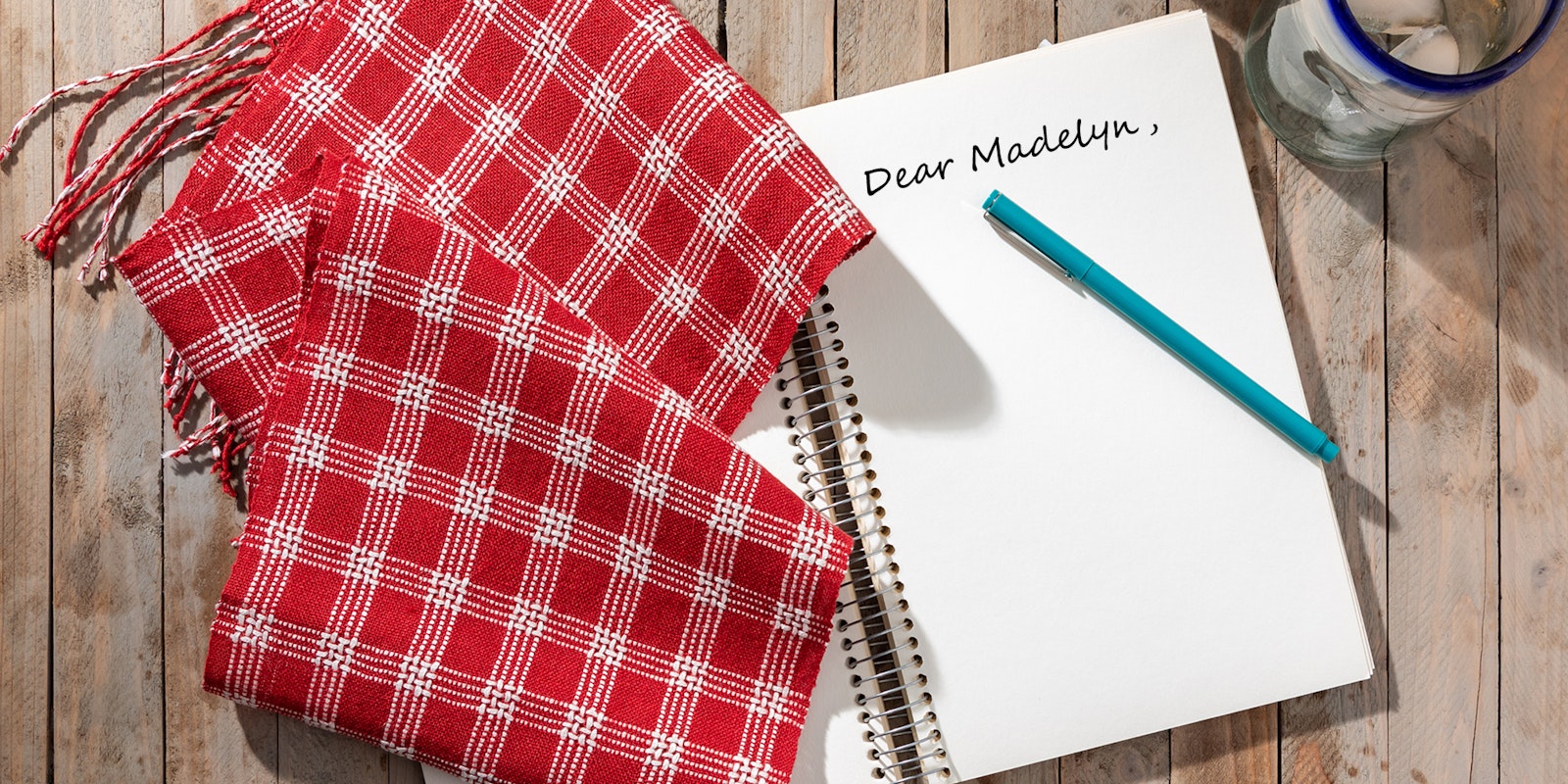Hi Madelyn!
I am a relatively new weaver and have a question about floating selvedges. I see the symbol for them in the drafts for projects in Handwoven and other sources, but am not sure why some drafts call for them and some don’t. Also, some projects seem to mention weighting them and some don’t. Do I add them after I beam the warp or include them in the warp itself?
—Sonia
Hi Sonia!
Floating selvedges aren't usually marked in the draft, but when they are, they're indicated with a dot between the threading and tie-up and another dot at the very end of the draft.
Floating selvedges are a great invention, but there are some choices to make regarding the ways to work with them. First of all, a floating selvedge is a single thread (usually), one on each side of the warp, that the weft always travels around as it goes from one edge of the warp to the other. They are only necessary if there are any sheds in the treadling repeat that leave down or raise the last thread on the edge for more than one pick in a row, which would mean that the weft would turn inside the last thread. They are therefore not necessary for weaving plain weave or any fabric with plain-weave selvedges. There are ways to treadle 4-shaft twills that can make them unnecessary, but I never like figuring that out and so I use them with all twills.
To become a floating selvedge, the last warp thread on each side of the warp is not threaded in a heddle, which means that it passes straight from front beam to back beam and is more or less in the middle of each opened shed (jack looms that don’t have much of a down shed place the floating selvedge closer to the bottom of the shed than to the top).
The shuttle then passes around the floating selvedge when it exits one shed and enters the next. The easiest way to do this is to take the shuttle into the shed over the floating selvedge and out of the shed under it. When it goes in, it is pretty easy to insert the shuttle close to the raised warp threads, thereby going over it, and also easy to catch the shuttle with the other hand, while at the same time slightly lifting the floating selvedge so the shuttle passes under it easily.
The floating selvedge needs to be weighted, always really, because it does not take up as the weaving progresses the way the rest of the warp threads do; it would become looser and looser without weight. I like to beam the floating selvedges with the rest of the warp and simply hang a 3” S-hook on each one (slip it under the floating selvedge and take it over the back beam to rest under the warp beam). You never have to think about it again.
If you add floating selvedges after beaming, you will have to lark's head the S-hook to the floating selvedge near the floor and undo and retie it as it reaches the back beam during weaving. Many weavers use film canisters with coins inside for weights (or prescription drug bottles now that film canisters are no longer “available”), but I find opening a film canister (or child-proof drug bottle!) and pulling out a length of thread every time you need to advance the weights a most onerous task. In cases where I haven’t beamed a floating selvedge or I’m weighting a broken warp thread with an S-hook, I just let the length of thread I need rest on the floor (in the case of very long added floating selvedges, I’d place a cone of the yarn on the floor and pull from it).
—Madelyn
If you have a weaving question please email Madelyn!

